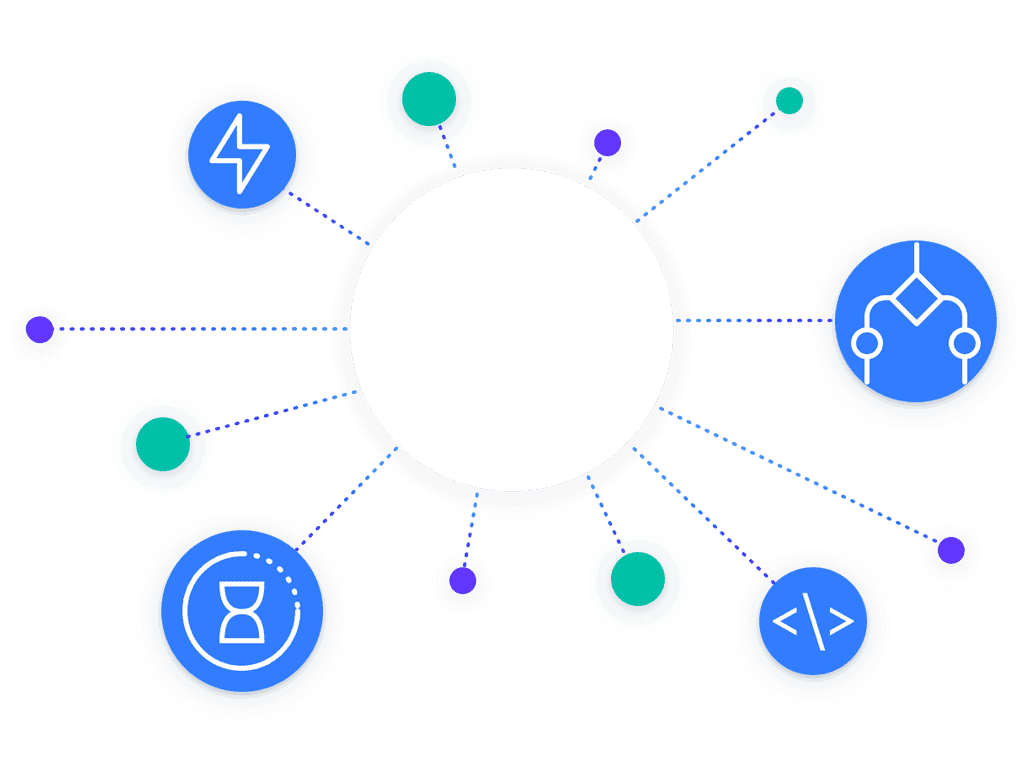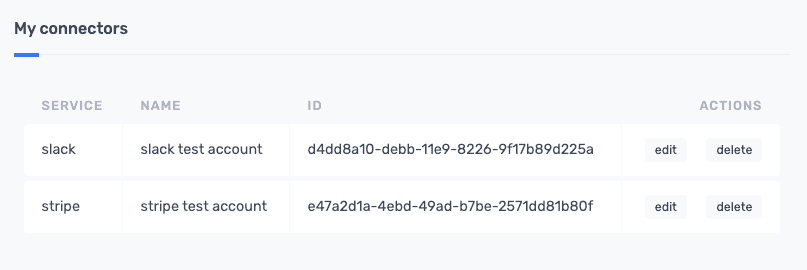Dropcontact API
Dropcontact searches for email addresses, enrich your data, update and remove duplicates ...
View Dropcontact API docs

Use the Dropcontact Connector
Add the dropcontact connector on your Zenaton dashboard,
enter the credentials and authorize Zenaton to call the dropcontact API from your workflows.
Then add code snippet and URL path to your workflow.

const { workflow } = require("zenaton")
module.exports = workflow("MyWorkflow", function* () {
const dropcontact = this.connector(
'dropcontact',
'connector-id')
const response = yield dropcontact.get('path_to_API')
const params = {body: {param1: '...'}}
yield dropcontact.post('path_to_API', params)
})The Zenaton Engine
We handle the complexity of orchestrating Dropcontact API calls and related logic in your code.

Out of the Box API Call
Add the connector to your Zenaton workflow and we manage the authentication, oauth1 and oauth2 flow including token refreshing.

Automatic Retries & Alerting
If your Dropcontact API call fails, it can automatically be retried and you will receive an alert with error details.

Monitoring and Troubleshooting
View the Zenaton dashboard for execution history, scheduled tasks, errors and logs or retry failed Dropcontact API calls.
Integrate Dropcontact into your application logic
The Zenaton connector is a pre-configured task for calling the Dropcontact API inside your workflow with one line of code. Build custom integration logic by adding a workflow directly into your application using the functions in the Zenaton SDK.

// The Zenaton engine orchestrates dropcontact API calls and related logic via the Zenaton agent. Every step is executed at the right moment on your servers and monitored on Zenaton dashboard.
const { workflow } = require("zenaton");
// dropcontact authentification on Zenaton
module.exports = workflow("ParallelWorkflow", function* () {
const dropcontact = this.connector(
'dropcontact',
'your-connector-id-from-zenaton-dashboard'
);
// execute parallel tasks handled automatically by the Zenaton engine
const [a, b] = yield this.run.task(["TaskA"],["TaskB"]);
if (a > b) {
const response = yield dropcontact.get('path_to_API');
} else {
yield this.run.task('TaskD');
}
});

const { workflow } = require("zenaton");
// dropcontact authentification on Zenaton
module.exports = workflow("AsynchronousWorkflow", function* () {
const dropcontact = this.connector(
'dropcontact',
'your-connector-id-from-zenaton-dashboard'
);
this.run.task('TaskA');
this.dropcontact.post('path_to_API');
yield run.task('TaskB');
yield this.run.task('TaskD');
});
// Tasks can be automatically (or manually) retried and executions are displayed in real-time on the Zenaton dashboard.

const { workflow, duration } = require("zenaton");
// dropcontact authentification on Zenaton
module.exports = workflow("WaitWorkflow", function* () {
const dropcontact = this.connector(
'dropcontact',
'your-connector-id-from-zenaton-dashboard'
);
yield this.run.task('TaskA');
// The 'wait function is managed by the Zenaton engine and will be executed on your worker at the right time.
yield this.wait.for(duration.days(7));
yield dropcontact.get('path_to_API');
});

const { workflow, duration } = require("zenaton");
module.exports = workflow("WaitEventWorkflow", function*() {
const dropcontact = this.connector(
'dropcontact',
'your-connector-id-from-zenaton-dashboard'
);
// Wait for up to 24 hours for the event using the Zenaton Wait Function.
const event = yield this.wait.event("MyEvent").for(duration.hours(24));
if (event) {
// If event has been triggered within 24 hours
yield this.run.task('TaskA');
} else {
// else calls dropcontact API
yield dropcontact.get('path_to_API');
}
}
});
Start building workflows
Sign-up and run a sample project Learn more
Zenaton
Product
Resources
Zenaton Examples